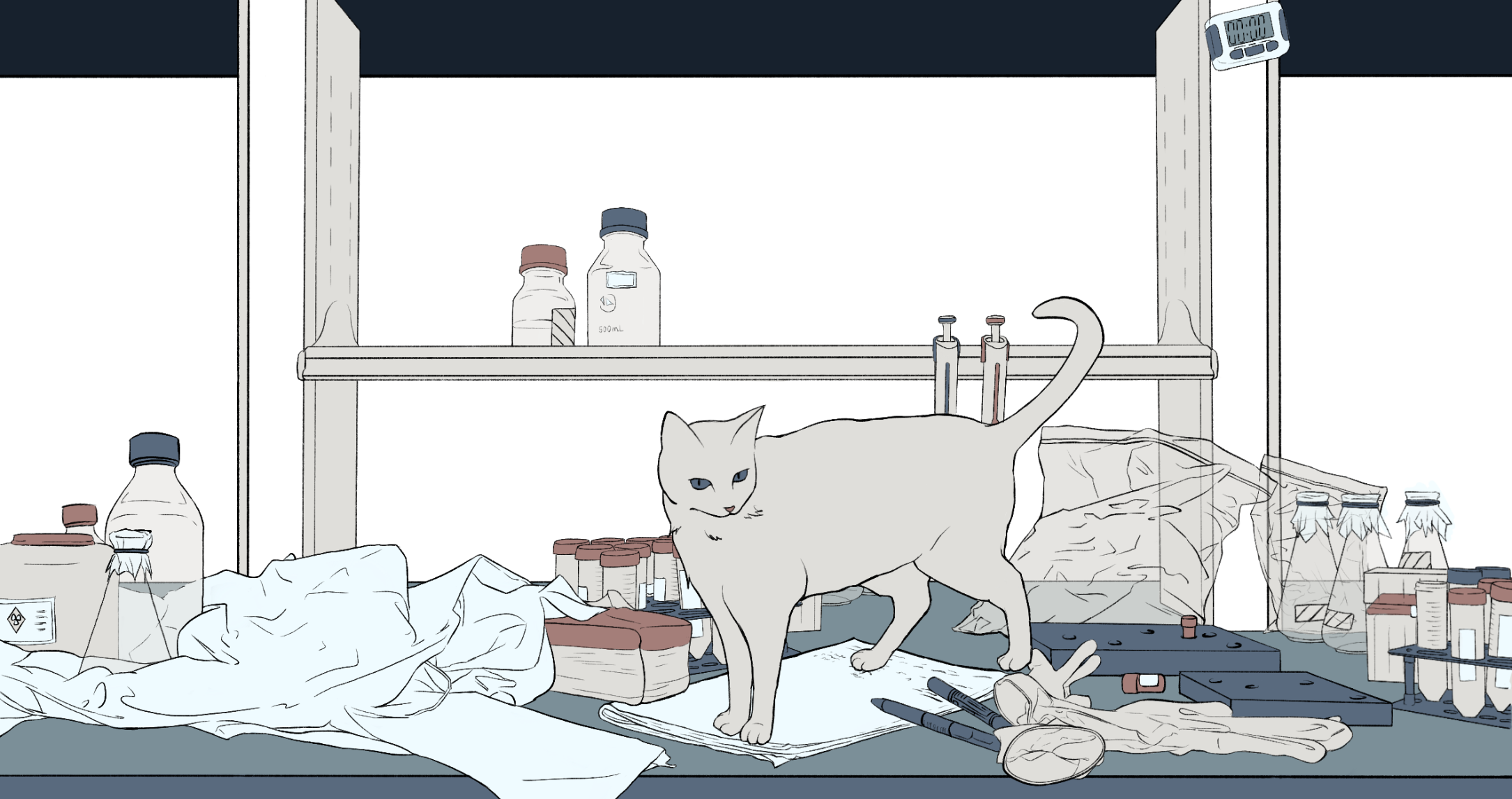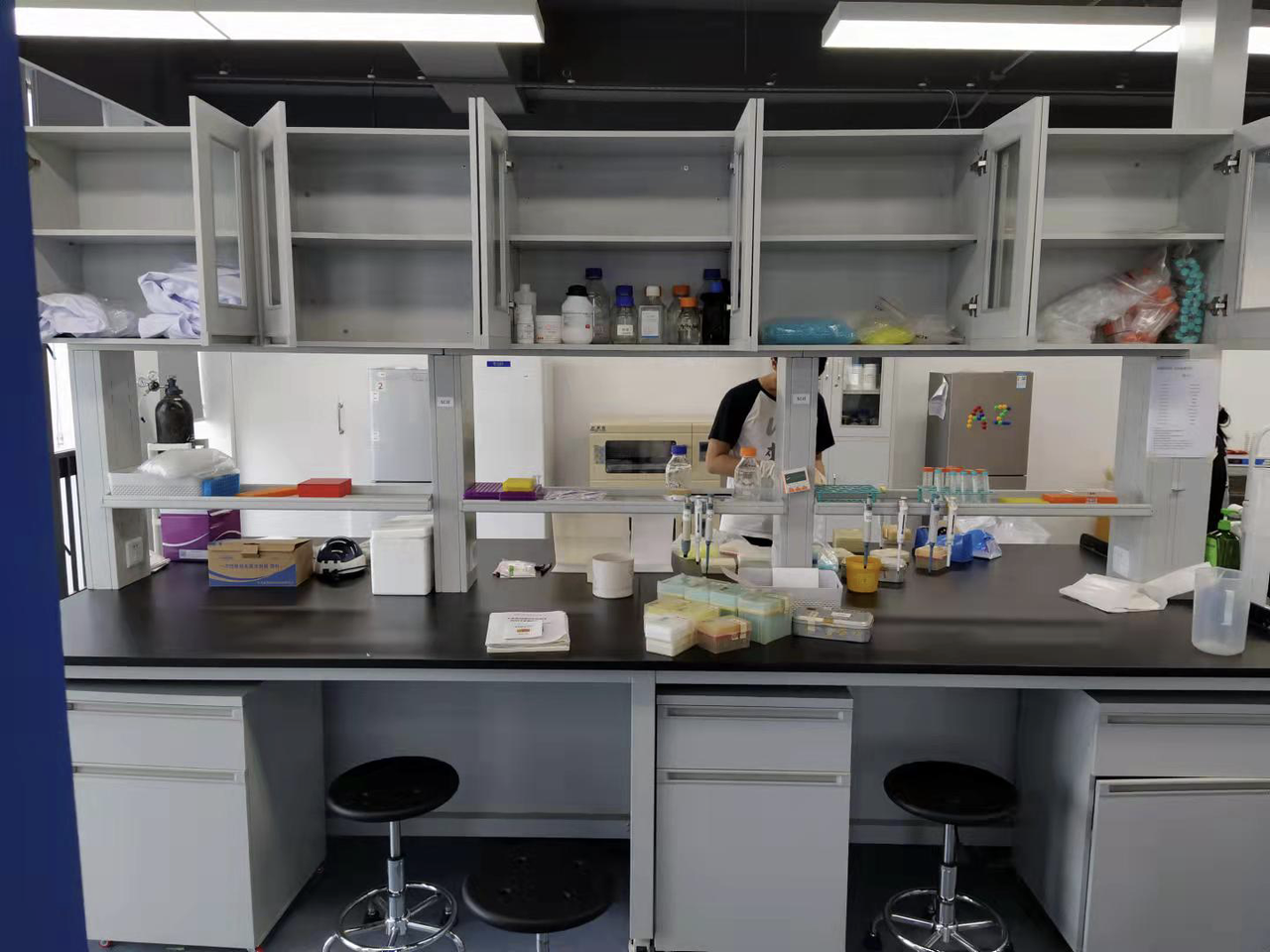

Safety
General Safety
Our laboratory ,where most experiments are done, is classified as Biosafety Level 1. This means our laboratory settings in which personnel work with low-risk microbes that pose little to no threat of infection in healthy adults. Our laboratory consists of research taking place on benches without the use of special contaminant equipment. At the same time, even though a BSL-1 lab is not required to be isolated from surrounding facilities and houses activities, our laboratory is separated into several zones with walls. (Not shown in the picture; this area is dedicated to iGEM teams)

In addition, before enrolling in the team, each of us was required to pass an exam including general lab protocols and lab safety. A formal handbook that consists of general lab protocols and lab safety is handed to everyone and pasted on the wall as well. Before conducting experiments, we are required to wear lab coats and gloves; taking off them, dumping gloves in the trash bin, and not taking anything out lab is also required.
Project Specific Safety
Use of doxorubicin
Doxorubicin is a drug enveloped into nanoparticles for treating breast cancer. After communicating with Dr.Zeng from the Southern University of Science and Technology, we have learned that doxorubicin can cause serious damage to our health, including cancer. Therefore, we strictly follow lab safety rules such as wearing masks, gloves, and lab coats. The whole experiment is done within fume cupboard and is under the instruction and supervision of Dr.Zeng.

Preparation of nanoparticles
During the preparation of the nanoparticle, chloroform was used as an organic solvent to dissolve PLGA. As a solvent not frequently used in our lab, we paid special attention to its hazard and we have inquired Dr.Wei about the necessary procedure required when working with it. We were informed that the solvent causes irritation to the skin and eye; is toxic if inhaled and is suspected of causing cancer. Dr. Wei stressed that gloves and goggles must be worn and most importantly, experiment operations involving chloroform should only be performed in a fuming cupboard. We were supervised throughout the experiment and rules suggested by Dr. Wei were strictly followed

Cell Culture
We have been culturing cancer cells in order to test the effectiveness of our system. The chemical(DMSO) used to culture cells and cells both constrict a potential threat. To protect ourselves and our cells, we conduct the whole experiment at Shenzhen University, under the help and supervision of Miss Cao(a student of Shenzhen University)Moreover, we strictly follow safety protocols incorporating sterilizing ourselves with ethanol sprays; sterilize the whole laboratory with UV light. In addition, considering the safety issue of cancer cells, we clear out one separate chamber of incubator for storing cells.

Reference
- Trapotsis, A. (2020, April 1). Biosafety Levels 1, 2, 3 & 4 | What’s The Difference? Consolidated Sterilizer Systems. https://consteril.com/biosafety-levels-difference/
- Tel-Aviv University - Safety Unit. (n.d.). In Tel-Aviv University - Safety Unit (p. 1). https://safety.tau.ac.il/sites/safety.tau.ac.il/files/media_server/safety/SOP%20for%20Doxorubicin%20in%20animals.pdf


